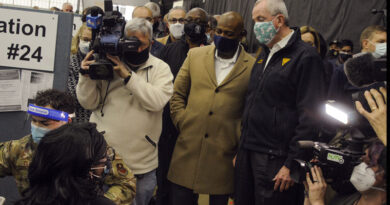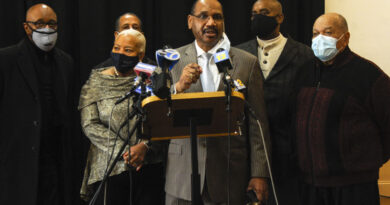COVID-19 Safety Tips for Commuters
Many commuters are back on the road as COVID-19 restrictions are lifting across the country and businesses are reopening.
For commuters using public transportation, car sharing services and carpooling, close proximity to fellow commuters may raise concerns about safety and risk of infection. That’s because COVID-19 is thought to spread mainly from person-to-person through droplets produced when an infected person sneezes, coughs, or talks.
“It’s important for people to remember that COVID-19 is still ongoing in the communities,” says Abinash Virk, M.D., a Mayo Clinic infectious diseases physician. “Even more important for people is to remember that COVID-19 affects older people and immune compromised people much more severely. So, travelers should think of the family and friends to whom they may potentially transmit this infection.”
Virk offers some suggestions on safety measures you can take if you are traveling with others or using public transportation.
Q. What are some COVID-19 safety tips for carpooling?
A. Travelers should wear a cloth mask when carpooling with people who are not from the immediate family. If passengers are not in the same household, try to ride with the same people on a regular basis. It’s is fine to travel in an air-conditioned car. There’s no known data that air conditioning can contribute to causing infection. Avoid offering or sharing water bottles, snacks or other items. Each passenger should handle their own bags and belongings. Limit close contact inside the vehicle when possible, and physically distance from each other when outside the vehicle. If using your own car or vehicle, clean and disinfect high-touch surfaces such as door handles, arm rests, steering wheel and seat belts.
Q. What about public transportation, such as trains and buses?
A. When taking public transportation, people should wear masks and avoid touching their face with their hands. It’s very important to use alcohol hand gel to decrease the risk of infection. It is well known that people can contaminate their masks with their hands. Therefore, hand hygiene needs to be maintained. Use hand sanitizer with at least 60% alcohol, and then wash your hands with soap and water when you arrive at your destination. Other tips include: Consider traveling during non-peak hours when there are likely to be fewer people, enter and exit buses through rear entry doors if possible and use touch-free payment methods when available.
Q. Should commuters wear gloves while using public transportation?
A. Commuters don’t need to wear gloves. Gloves will only cause people to have a sense of false security as the gloves can be contaminated just like the hands. For prolonged public transportation, if possible avoid eating so you don’t have to take off your mask. However, if the mask will be taken off for eating or drinking on a tray attached to the seat, then carrying disinfectant wipes may be helpful. However, even in that scenario. hand hygiene is the most important component.
The Centers for Disease Control and Prevention recommends practicing good hand hygiene and respiratory etiquette before using any and all modes of transportation:
- Before you leave, wash your hands with soap and water for at least 20 seconds or use hand sanitizer with at least 60% alcohol.
- Once you reach your destination, wash your hands again with soap and water for at least 20 seconds or use hand sanitizer with at least 60% alcohol as soon as possible upon arrival.
- Avoid touching your eyes, nose and mouth with unwashed hands.
- Cover your coughs and sneezes with a tissue or use the inside of your elbow. Throw used tissues in the trash and wash your hands immediately with soap and water for at least 20 seconds or use hand sanitizer with at least 60% alcohol.
“And please remember if you are not feeling well, it’s important to stay home and not use public transportation,” Virk said.


